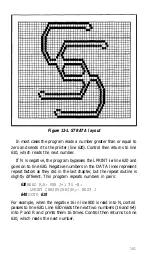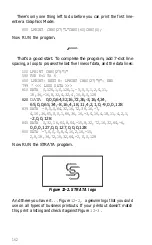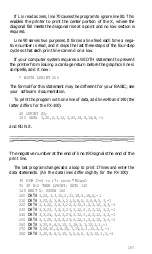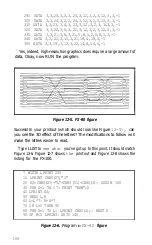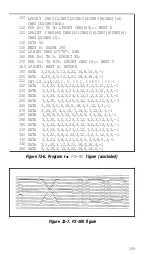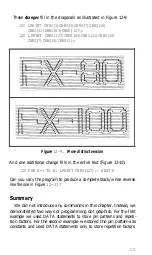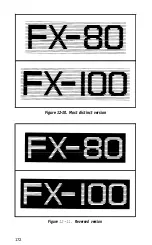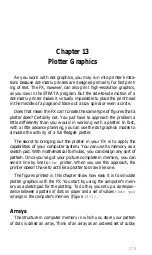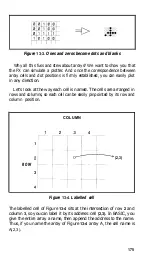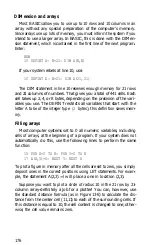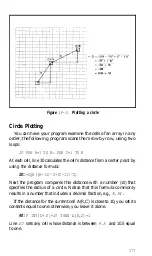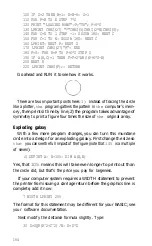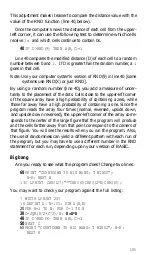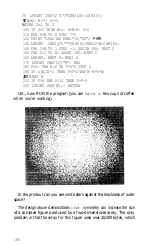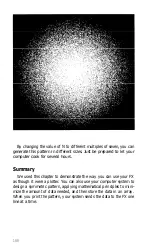
Figure
13-3.
Ones and zeros become dots and blanks
Why all this fuss and stew about arrays? We want to show you that
the FX can simulate a plotter. And once the correspondence between
array cells and dot positions is firmly established, you can easily plot
in any direction.
Let’s look at the way each cell is named. The cells are arranged in
rows and columns, so each cell can be easily pinpointed by its row and
column position.
COLUMN
ROW
(2,3)
Figure
13-4.
Labelled cell
The labelled cell of Figure
13-4
sits at the intersection of row
2
and
column
3,
so you can label it by its address: cell
(2,3).
In BASIC, you
give the entire array a name, then append the address to the name.
Thus, if you name the array of Figure
13-4
array A, the cell name is
A(2,3).
175
Summary of Contents for FX-80
Page 1: ......
Page 22: ......
Page 23: ......
Page 26: ......
Page 31: ...Figure 1 1 The FX 80 and FX 100 printers 14 ...
Page 32: ...Figure 1 2 Printer parts 1 5 ...
Page 38: ...Figure 1 8 DIP switch vent 21 ...
Page 42: ...Figure 1 11 Ribbon insertion 25 ...
Page 51: ...Figure 1 20 Paper thickness adjustment 34 ...
Page 85: ......
Page 92: ......
Page 95: ......
Page 97: ...80 ...
Page 109: ......
Page 117: ...Figure 7 3 Staggering STAIR STEPS 100 ...
Page 119: ...Table 7 1 Line spacing commands 102 ...
Page 129: ...112 ...
Page 147: ...130 ...
Page 181: ...Figure 12 4 Corner of the FX 80 design ...
Page 189: ...Figure 12 10 Most distinct version Figure 12 11 Reversed version 172 ...
Page 215: ...198 ...
Page 231: ...214 ...
Page 249: ......
Page 269: ......
Page 272: ...iv ...
Page 283: ......
Page 290: ......
Page 305: ...282 ...
Page 311: ...288 ...
Page 323: ...300 ...
Page 339: ......
Page 343: ...320 ...
Page 349: ...326 ...
Page 353: ...330 ...
Page 354: ...Schematic 331 ...

